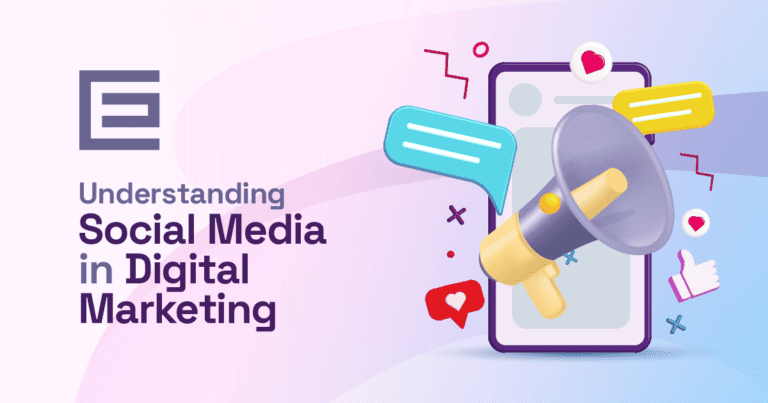 There’s one salesperson – well, sales tool really – that can accomplish all of these things. They don’t need a company car, expense account, or even a business card. They are free to hire and are happy to work weekends and late into the night. It’s your social media accounts.
Many companies think of social media as a tool solely for marketing purposes. Or as an afterthought that someone posts on occasionally to look “hip”. Or as something you tried once but didn’t feeling like it had any results so declared it a waste of your time.
We’ve created this resource to help you understand the benefits of social media as a sales tool for your company. That it is a tool to enhance your brand and engage your users. That it’s a great way to get to know your customers better – and reach into new target markets. That if you’re not using it as a tool for engagement – that if you’re just using it to sell your products – that your customers will not respond to your efforts. That it’s important to review your metrics to see the results of your efforts and to help guide your future campaigns.
There’s one salesperson – well, sales tool really – that can accomplish all of these things. They don’t need a company car, expense account, or even a business card. They are free to hire and are happy to work weekends and late into the night. It’s your social media accounts.
Many companies think of social media as a tool solely for marketing purposes. Or as an afterthought that someone posts on occasionally to look “hip”. Or as something you tried once but didn’t feeling like it had any results so declared it a waste of your time.
We’ve created this resource to help you understand the benefits of social media as a sales tool for your company. That it is a tool to enhance your brand and engage your users. That it’s a great way to get to know your customers better – and reach into new target markets. That if you’re not using it as a tool for engagement – that if you’re just using it to sell your products – that your customers will not respond to your efforts. That it’s important to review your metrics to see the results of your efforts and to help guide your future campaigns.
Social Media Selling
One of the first rules of selling is to focus on what the customer has to say, not what you have to say. Entrepreneur Magazine says that it is crucial in the first few minutes of a sales interaction to remember:- Don’t talk about yourself
- Don’t talk about your products
- Don’t talk about your services
- And above all, don’t recite your sales pitch
Me: “Hi, I’m Sharon!” You: “Hi Sharon, I’m Joe.” Me: “I work for TheeDigital, an award winning web design and internet marketing agency.” You: “I work for Shoezzz Company.” Me: “Responsive web design allows your website to display on different devices and it will move, scale, and rearrange for each screen size.” You: “I don’t need a new website, but I could use some help with getting ranked higher on Google.” Me: “We use a mobile first approach to designing your new website, and focus on a user-friendly experience.” You: [trying to change the subject] “Wow, these meatballs are fantastic, have you tried some?” Me: “With a responsive website, you make updates in one place and the updates will populate across all device types.” You: [walks away]Here’s a few questions to ask yourself to determine if your company is guilty of selling on social media:
- When was the last time you posted information from a source not at your company?
- When was the last time you posted about an event or happening in your community not related to your company?
- When was the last time you posted something light-hearted or silly to make your followers smile – something that is NOT a picture of your product or an employee?
- When was the last time you shared a post asking the opinion of your followers – not for a like, but for them to actually engage and inform you?
 I’ll be using a shoe store in a mall as an example business to showcase these techniques. If the store posts constantly about new shoe styles they have in stock, their sales, people wearing their shoes, a sidewalk sale in their mall, would you be interested in following that? It might be interesting at first, but after a month or two it’s going to feel monotonous and repetitive. That’s because the store is focused solely on social media selling.
A customer would be more interested in following a store that focuses on social media education and engagement. The shoe store can share about the latest fashion trends for summer. They can educate people who have flat feet arches why getting a running shoe with built in arch support is better for their feet. They can tell people the difference between a sock to wear when hiking versus one for playing tennis. They can post a humorous, yet informative, article about how to avoid foot odor. These posts include things customers might want to read or learn about. They might have a friend who would find that information helpful, which leads them to share your post (as I’ll explain further below, a share is social media gold!) These posts would help your customer think of you as an expert in your field, and is a way of reaching out to them – getting them to think about your brand – beyond just a sales pitch.
I’ll be using a shoe store in a mall as an example business to showcase these techniques. If the store posts constantly about new shoe styles they have in stock, their sales, people wearing their shoes, a sidewalk sale in their mall, would you be interested in following that? It might be interesting at first, but after a month or two it’s going to feel monotonous and repetitive. That’s because the store is focused solely on social media selling.
A customer would be more interested in following a store that focuses on social media education and engagement. The shoe store can share about the latest fashion trends for summer. They can educate people who have flat feet arches why getting a running shoe with built in arch support is better for their feet. They can tell people the difference between a sock to wear when hiking versus one for playing tennis. They can post a humorous, yet informative, article about how to avoid foot odor. These posts include things customers might want to read or learn about. They might have a friend who would find that information helpful, which leads them to share your post (as I’ll explain further below, a share is social media gold!) These posts would help your customer think of you as an expert in your field, and is a way of reaching out to them – getting them to think about your brand – beyond just a sales pitch.
Getting to Know You
Another important part of the sales process is establishing relationships with your prospects and getting to know them. Numerous companies specialize in creating and selling lists including details about your potential prospects such as buying habits, number of children, home ownership, and more. But why pay for insights when you can get some for free – through social media. By paying attention to what your prospects and customers are liking, posting about, and sharing on social media, you can learn a lot about them. You can see if they like your competition, and what posts of theirs they engage with, if they have children, and more. From the pictures they post to the descriptions they have in their profiles, you can learn what they like to talk about. And then you can tailor your posts to talk about stuff along the same line. If our fictional shoe store saw a lot of their fans posting pictures of them at 5K races or triathlons, they could create a social campaign around educating their fans about running. Posts could include what to eat before a race, syncing your music with your target heart rate, or a link to a calendar including local running clubs. This type of educational post is more likely to get shares and comments from your fans that like running then a post just selling a running shoe.
You can take data gathering one step further easily on Pinterest. Pinterest’s analytics, which is available with business accounts, provides you with your follower’s country, metro area, language, gender, top interests, and other brands they engage with. Even if Pinterest is not the main social media platform your company uses, the information you learn from there can help you create campaigns on your other profiles as well.
You can use these insights from social media to help plan offline marketing efforts as well. If the shoe store sees a lot of their fans attending the same 10k race one weekend, they can look into sponsorship opportunities for similar events. Or if a lot of the fans like a jewelry brand that’s in the same mall as they are, they can plan a fashion show with that jewelry store and another store in the mall. If their fans share pictures of children, they can have a giveaway for a party at a local trampoline park – including those special sticky socks that’s required to wear on the trampolines that their store just “happens” to carry in a lot of colors.
If our fictional shoe store saw a lot of their fans posting pictures of them at 5K races or triathlons, they could create a social campaign around educating their fans about running. Posts could include what to eat before a race, syncing your music with your target heart rate, or a link to a calendar including local running clubs. This type of educational post is more likely to get shares and comments from your fans that like running then a post just selling a running shoe.
You can take data gathering one step further easily on Pinterest. Pinterest’s analytics, which is available with business accounts, provides you with your follower’s country, metro area, language, gender, top interests, and other brands they engage with. Even if Pinterest is not the main social media platform your company uses, the information you learn from there can help you create campaigns on your other profiles as well.
You can use these insights from social media to help plan offline marketing efforts as well. If the shoe store sees a lot of their fans attending the same 10k race one weekend, they can look into sponsorship opportunities for similar events. Or if a lot of the fans like a jewelry brand that’s in the same mall as they are, they can plan a fashion show with that jewelry store and another store in the mall. If their fans share pictures of children, they can have a giveaway for a party at a local trampoline park – including those special sticky socks that’s required to wear on the trampolines that their store just “happens” to carry in a lot of colors.
Understanding Social Media Metrics
A number of people who think posting on social media is not time well spent for their business also are the same people who don’t look at their metrics. It would be like stating “This is my worst month of sales ever” without comparing your sales numbers to the previous months, where you might then notice a seasonal downturn every summer. You also need to compare your efforts to competitors in the same industry and in a similar price point. Don’t compare the sales or traffic of your exclusive shoe store to the crowds in the Apple store in the same mall. Here’s a definition of the common social media metrics and how you can interpret their success for your store:- Reach/Impressions: How many people saw your post. In the shoe store example, that would equal how many people walked by and saw a single pair of red heels. Just because you walked by that pair doesn’t mean you’re interested in buying them – you may be there for running shoes, sandals, or to buy some men’s dress shoes.
- Likes: A person liked a very specific thing you posted about. At the shoe store, it would be someone telling their friend they’re shopping with “those are cute” or “oh look, Bandolino brand shoes are 50% off today”. It doesn’t mean that person will actually buy those cute shoes or the Bandolino shoes.
- Comments: The user liked your content, and wanted to share their thoughts on it. In the shoe store, that probably means they’re going to try that pair on and are likely to buy them. Comments take the silver medal in importance in the social media world.
- Shares: The users enjoyed your content enough to share it with their friends. For the shoe store, this would mean the customer bought the shoes and showed them off to her friends, telling them to buy shoes from your store as well. Shares are social media gold, the highest form of engagement you can get on a post.
Need help planning your social media campaigns? Want help creating posts that educate and engage your customers? Contact our social media marketing experts at 919-341-8901 or click here to schedule a consultation.
Tags: Digital Marketing • Inbound Marketing






